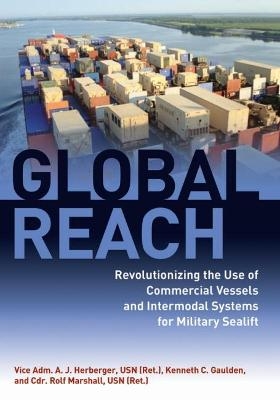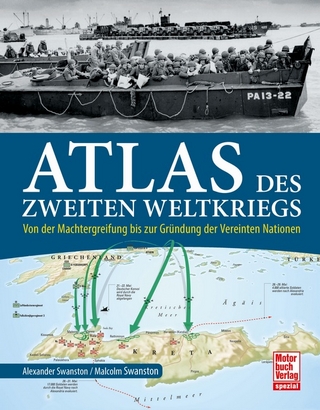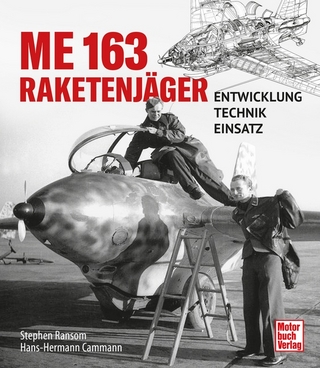
Global Reach
Naval Institute Press (Verlag)
978-1-61251-847-3 (ISBN)
- Titel z.Zt. nicht lieferbar
- Versandkostenfrei innerhalb Deutschlands
- Auch auf Rechnung
- Verfügbarkeit in der Filiale vor Ort prüfen
- Artikel merken
Global Reach presents a unique view of the fiscal constraints facing the Department of Defense and the U.S. Government. It calls for U.S. policymakers and the general public to understand the message within the book. With this understanding, the United States will ensure its future ability to acquire and maintain the sealift capability to respond to these challenges in the years to come.
The 20 years following the Persian Gulf Conflict (1990-91) saw a revolution in the means by which the United States military deploys and sustains U.S. armed forces worldwide during contingencies. Historically, 95 percent of the equipment and supplies our military needs to fight and win in combat are delivered by ship. That remains true today. What has changed is how those cargoes are delivered in theatre. For almost as long as nations sought to deploy military forces by sea, they relied on commercial “Ships Taken Up From Trade” to meet those needs.
This changed for the United States with the global conflicts of the 20th Century. With millions of troops deployed oversea and the need to simultaneously supply allied nations with tools of war and food and supplies for their civil economies, the need for sealift exceeded what the commercial fleet could supply. For both the First and Second World Wars, America’s mobilization including the construction of thousands of government-owned merchant type ships for sealift. This Government-owned fleet model remained the general practice after 1945 as U.S. forces during both the Korean and Vietnam conflicts were in large part deployed and supplied by the same ships as had supported the Allied victories in Europe and the Pacific.
The Persian Gulf Conflict signalled a need for change. Not only had the nature of the conflicts changed, but so too had the commercial maritime industry in the United States and worldwide. Working in close cooperation with its commercial industry partners, including carriers and maritime labour, the U.S. military over the next decade revolutionized the use of commercial vessels and intermodal systems for military sealift. By 2002, the then Commander of the U.S. Transportation Command, General John W. Handy, USAF, in testimony before the U.S. Congress stated that “[w]e simply cannot, as a nation, fight the fight without the partnership of the commercial maritime industry.” By 2009-10, not only was 95 percent of all equipment and supplies required by U.S. forces in Iraq and Afghanistan still being delivered by ship, but over 90 percent of those cargoes were being transported by United States-flag commercial vessels and U.S. citizen crews in regular commercial liner services.
This is the story of that revolution in military sealift.
Vice Adm. A.J. Herberger, USN (Ret) is the first graduate of the U.S. Merchant Academy to achieve three-star rank with over 35 years commissioned service with the U.S. Navy. He served as the first Deputy Commander in Chief of the U.S. Transportation Command and upon retirement from the Navy, he has served as Administrator of the U.S. Maritime Administration and has remained active in professional military and maritime organizations. Kenneth C. Gaulden worked for Sea-Land Services, Inc. for 30 years, until its acquisition by Maersk Inc. where he worked in various capacities. Mr. Gaulden has been directly involved the development and implementation of commercial intermodal sealift for the U.S. military and other government agencies. He is a widely recognized proponent of the military use of United States flag intermodal sealift as a proven way for the military to achieve assured access to global intermodal sealift network services at a fraction of the cost of other programs. Cdr. Rolf Marshall, USN (Ret.) has had 27 years' commissioned service in the United States Navy (1964-1991) as a Surface Warfare Officer with sub-specialties in Weapons Systems Acquisition and Operations Research and Analysis. Following his retirement from the Navy he worked for 20 years with Washington DC-based law firms in the areas of maritime law, regulation, and legislation, representing clients from across the domestic and international industries.
| Erscheint lt. Verlag | 15.1.2016 |
|---|---|
| Zusatzinfo | 95 black and white photographs |
| Verlagsort | Annopolis |
| Sprache | englisch |
| Maße | 178 x 254 mm |
| Gewicht | 1326 g |
| Themenwelt | Natur / Technik ► Fahrzeuge / Flugzeuge / Schiffe ► Militärfahrzeuge / -flugzeuge / -schiffe |
| Geisteswissenschaften ► Geschichte ► Regional- / Ländergeschichte | |
| Geschichte ► Teilgebiete der Geschichte ► Militärgeschichte | |
| Sozialwissenschaften ► Politik / Verwaltung | |
| ISBN-10 | 1-61251-847-8 / 1612518478 |
| ISBN-13 | 978-1-61251-847-3 / 9781612518473 |
| Zustand | Neuware |
| Haben Sie eine Frage zum Produkt? |
aus dem Bereich


